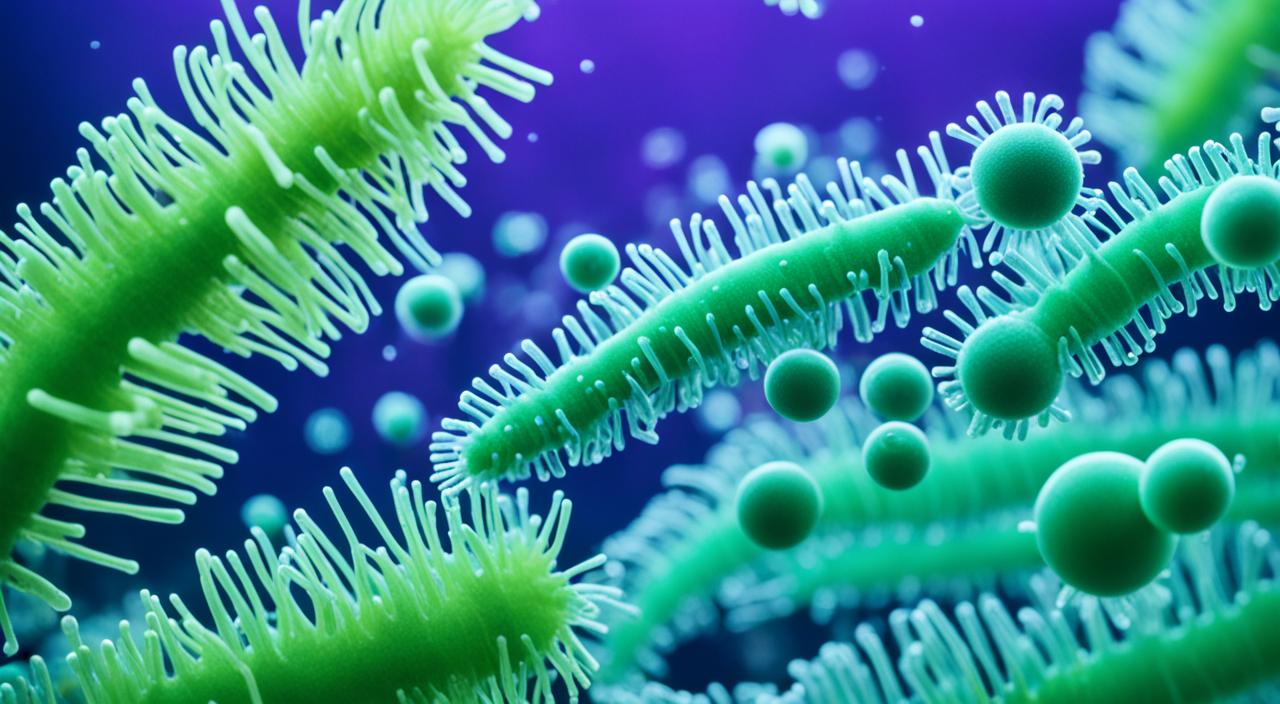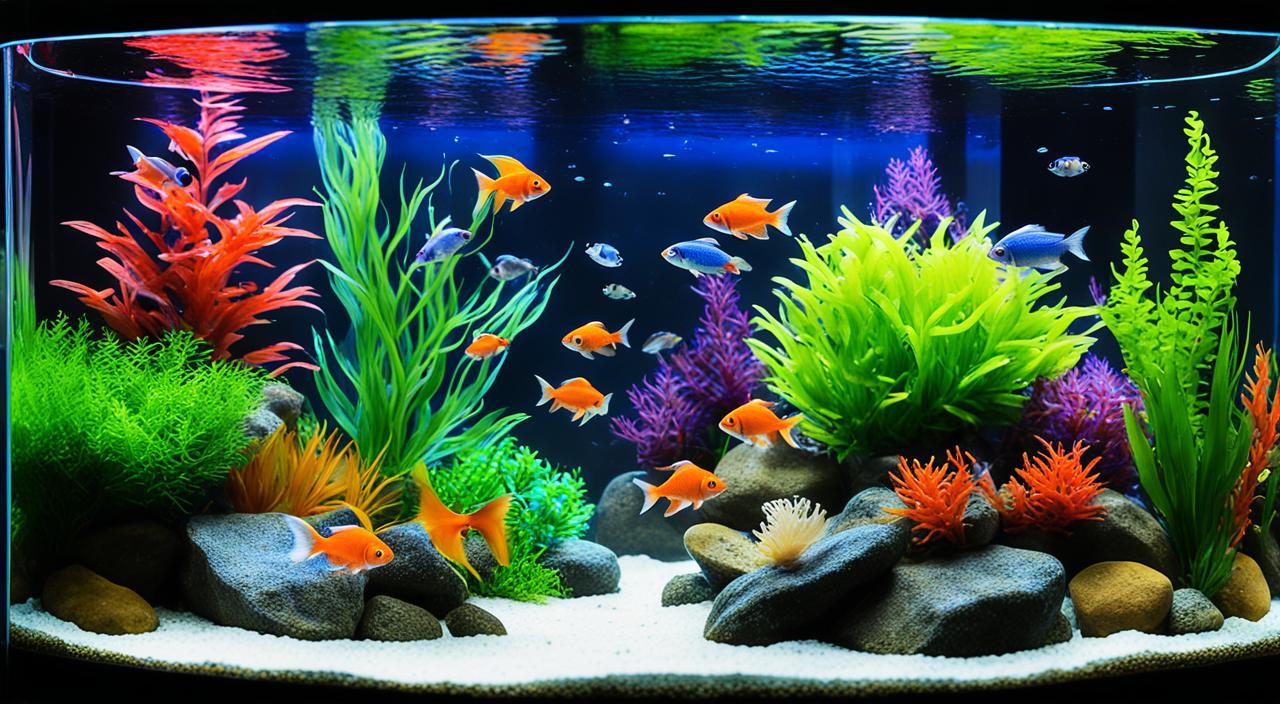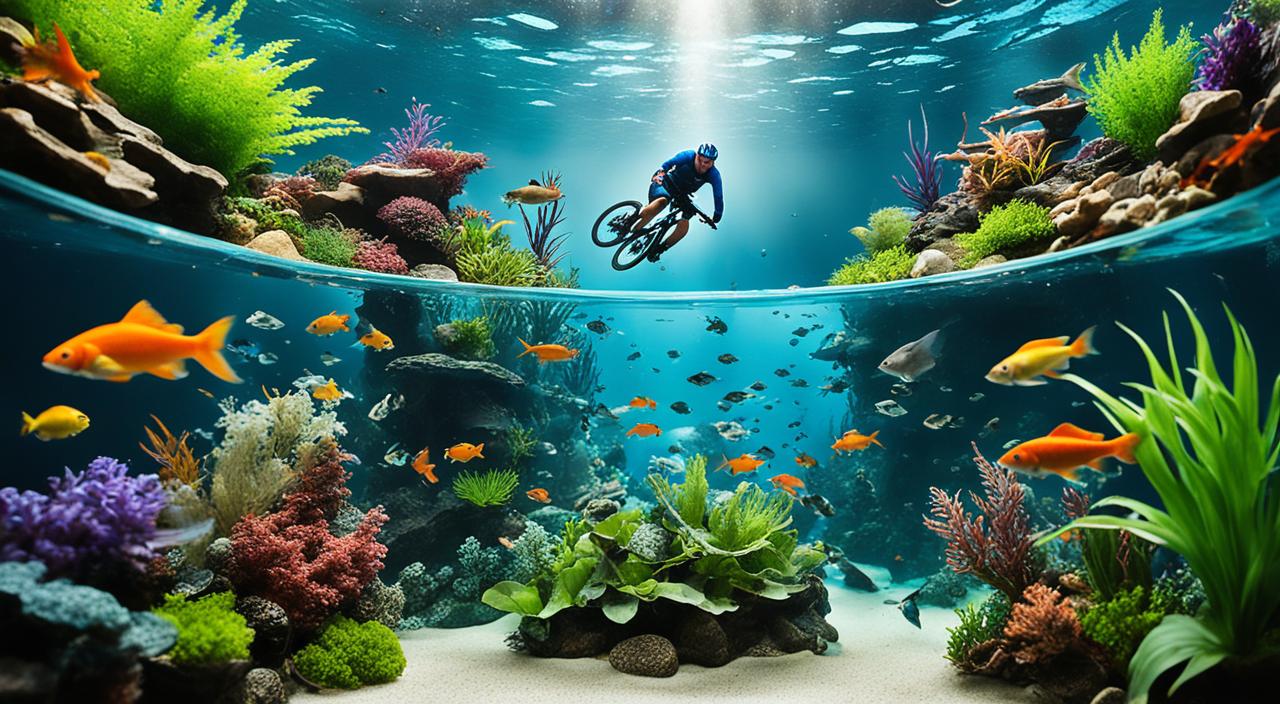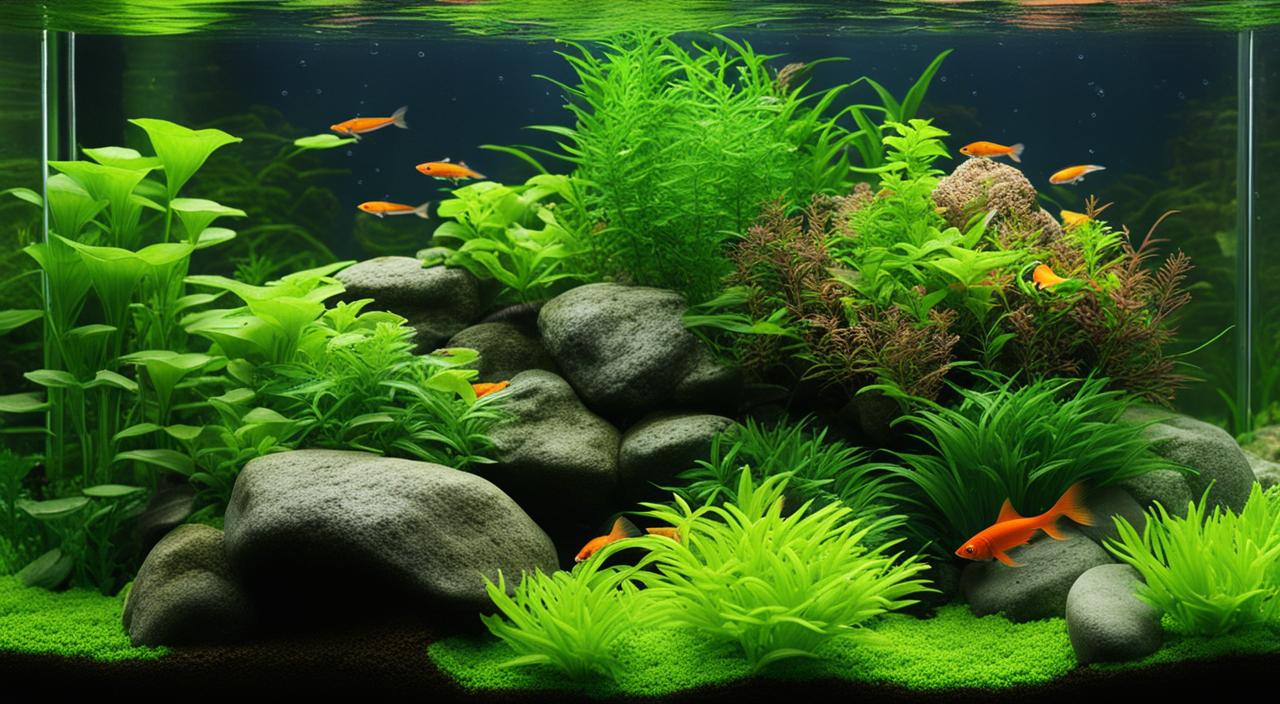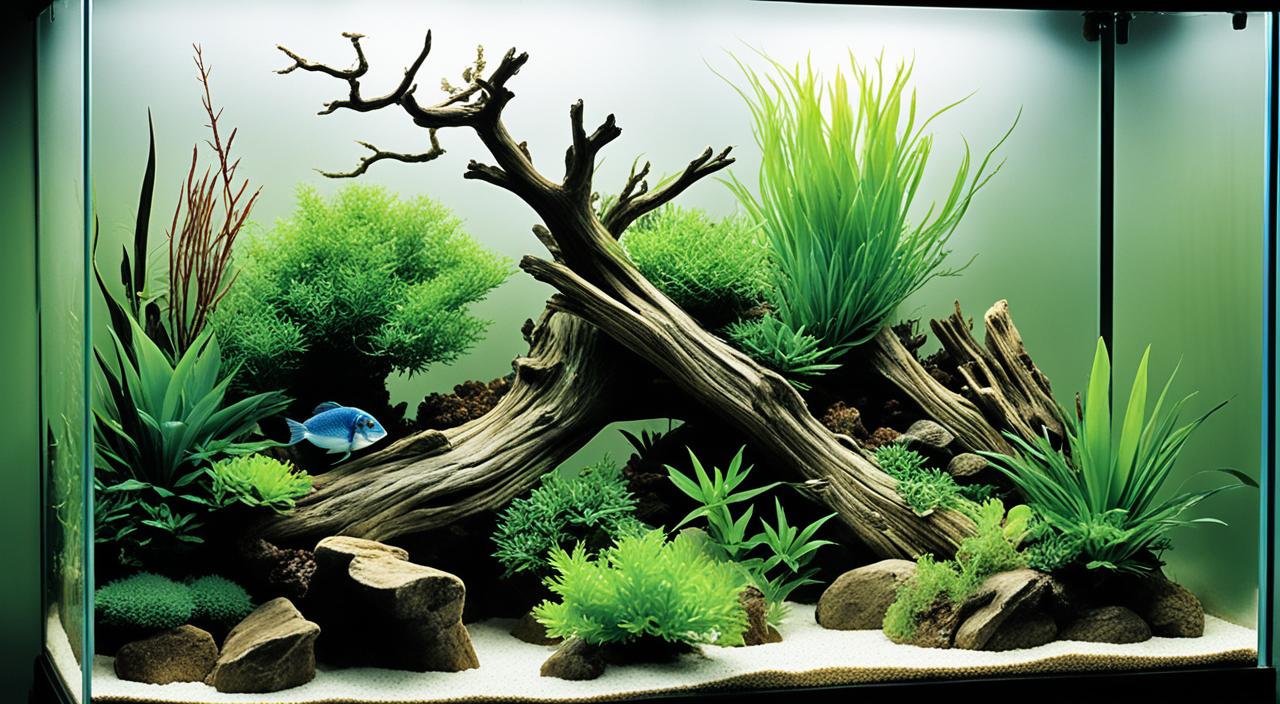Setting up a new fish tank or fishpond requires the establishment of a healthy ecosystem, and one crucial aspect is the nitrogen cycle. Bacteria sources that promote cycling play a vital role in creating a safe and thriving habitat for fish. These sources introduce beneficial bacteria that facilitate the conversion of harmful substances, such as ammonia and nitrite, into nitrate.
One reliable product that can kickstart the aquarium cycling process is OZPOLISH Bio-Cure. Explicitly designed for aquariums, it restores and accelerates the nitrogen cycle, ensuring a stable and optimal environment for fish to thrive. Following a straightforward 5-step dosing process, you can establish a healthy ecosystem for your aquatic pets.
Key Takeaways:
- Bacteria sources are essential for cycling in aquariums, promoting the growth of beneficial bacteria.
- Products like OZPOLISH Bio-Cure can accelerate the nitrogen cycle, creating a safe habitat for fish.
- The 5-step dosing process involves preparing the environment, introducing the bacteria source, and maintaining the balance through regular dosing and water changes.
- Aquarium cycling ensures the well-being of fish and prevents “New Tank Syndrome.”
- Monitoring the nitrogen cycle using an aquarium test kit is crucial during cycling.
Understanding Aquarium Cycling
Aquarium cycling is vital in creating a safe and healthy environment for fish in a new tank. It involves the introduction of nitrifying bacteria, which play a crucial role in the nitrogen cycle. The nitrogen cycle is a natural process that converts harmful ammonia into nitrite and nitrate.
This process helps prevent the buildup of toxic substances in the tank and ensures the well-being of the fish. Without proper cycling, fish may suffer from “New Tank Syndrome,” caused by the accumulation of toxins in an uncycled aquarium.
The cycling process typically takes four to eight weeks to establish a stable and balanced ecosystem for the fish. During this time, nitrifying bacteria colonize the tank, converting harmful ammonia into less toxic substances.
Why is Aquarium Cycling Important?
Aquarium cycling is crucial for several reasons:
- Prevents the buildup of toxic ammonia: As fish produce waste, ammonia levels can quickly rise in an uncycled tank. Cycling establishes a stable level of nitrifying bacteria that convert ammonia into nitrite and nitrate, ensuring a safe environment for the fish.
- Promotes a healthy nitrogen cycle: The nitrogen cycle is essential for breaking waste and converting toxic substances. By establishing a robust nitrifying bacteria population, the cycling process ensures the continuous removal of harmful chemicals.
- Prevents “New Tank Syndrome”: New Tank Syndrome occurs when toxins, such as ammonia and nitrite, accumulate in an uncycled aquarium. This condition can be harmful or fatal to fish. Proper cycling helps avoid this syndrome and provides a healthy habitat for fish to thrive.
Monitoring the Cycling Process
To ensure the successful completion of the cycling process, monitoring the levels of ammonia, nitrite, and nitrate is essential. An aquarium test kit allows you to measure and track these levels accurately.
| Parameter | Ideal Level |
|---|---|
| Ammonia | 0 ppm |
| Nitrite | 0 ppm |
| Nitrate | Below 40 ppm |
Regular testing during the cycling process helps ensure that ammonia and nitrite levels are decreasing while nitrate levels are increasing. Once ammonia and nitrite reach undetectable levels and nitrate is present, the tank has successfully cycled and is ready to introduce fish.
Understanding and mastering the aquarium cycling process is crucial for creating a healthy and thriving aquatic environment. By providing the necessary conditions and monitoring the cycling progress, you can establish a safe habitat for your fish and prevent potential health issues associated with a new tank.
How to Cycle an Aquarium
When it comes to cycling an aquarium, there are two methods you can choose from: cycling with fish or cycling without fish. While both approaches have advantages and considerations, cycling without fish is generally recommended for its humane treatment and better control over the cycling process.
Cycling Without Fish:
1. Set up the tank components, including substrate, decorations, and filtration system.
2. Check the water’s pH to ensure it suits your desired fish species.
3. Add ammonia to kickstart the cycling process. This can be done by using fish food or another reliable ammonia source.
4. Monitor and regulate ammonia and nitrite levels using an aquarium test kit.
5. Conduct regular water changes to maintain the water quality and help control ammonia and nitrite levels.
6. Introduce fish to the tank once the cycling process is complete, indicated by zero ammonia and nitrite readings on the test kit.
Cycling With Fish:
1. Add a few hardy fish, such as danios or guppies, to the tank.
2. Closely monitor ammonia and nitrite levels using an aquarium test kit.
3. Perform frequent water changes to keep the water parameters in check and reduce the stress on the fish.
4. Slowly add more fish to the tank once the cycling process is complete and the ammonia and nitrite levels are consistently low.
Benefits of Cycling Without Fish:
- It is a more humane approach as fish are not subjected to potentially harmful ammonia and nitrite levels during cycling.
- It provides better control over the cycling process, allowing for easier monitoring and adjustment of water parameters.
- Reduces the risk of fish loss due to ammonia and nitrite toxicity.
- Introducing fish to a fully cycled and stable aquarium allows for a smoother transition.
Regardless of the method chosen, regular monitoring of water parameters, including ammonia, nitrite, and nitrate levels, is essential. This can be achieved using an aquarium test kit to ensure a safe and healthy environment for your fish.
Remember: Proper maintenance of the cycling process, such as performing water changes and monitoring ammonia levels, is crucial for the success of your aquarium’s nitrogen cycle.
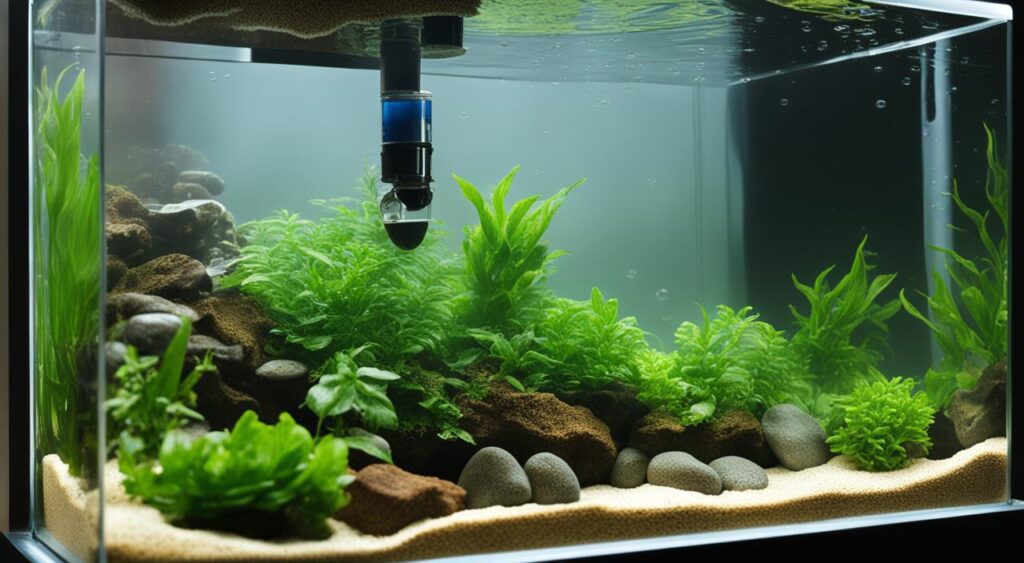
With these guidelines in mind, you can confidently cycle your aquarium and establish a stable and thriving ecosystem for your fish.
The Role of Bacteria Sources in Cycling
Bacteria sources play a crucial role in the cycling process of an aquarium. Specifically, the growth of nitrifying bacteria, such as the Nitrospira species, is essential. These bacteria have the ability to convert harmful ammonia and nitrite into nitrate, creating a safe environment for fish.
There are various cycling products available in the market that contain the right species of bacteria to facilitate the cycling process. Some popular options include OZPOLISH Bio-Cure, Tetra Safe Start, and Fritz Zyme 7. These products provide the necessary bacterial sources to establish and maintain a healthy nitrogen cycle in an aquarium.
In addition to using bacterial products, another method for cycling an aquarium is the fishless cycle. This approach involves growing bacteria in the absence of fish, using ammonia as the source. By maintaining optimal levels of ammonia, nitrite, and nitrate, the bacteria can thrive and establish a stable nitrogen cycle. Regular monitoring of ammonia levels, nitrite levels, and nitrate levels using an aquarium test kit is crucial during this process.
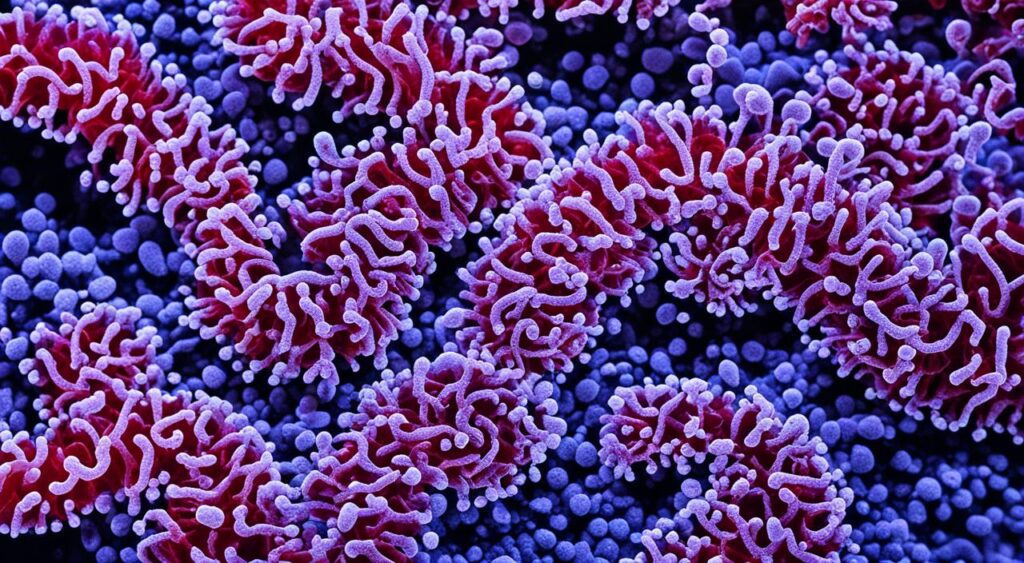
Understanding the role of bacterial sources in cycling is vital for setting up a healthy and thriving aquarium. By providing the necessary bacteria and maintaining the ideal cycling conditions, fish enthusiasts can create a balanced ecosystem that promotes the well-being of their aquatic pets.
Tips for Successful Cycling
To ensure a successful aquarium cycling process, it is crucial to maintain optimal conditions in the tank. This starts with monitoring and regulating the temperature, pH, and water quality. Keeping the temperature within the recommended range for your specific fish species will promote their health and enhance the cycling process. Similarly, maintaining the appropriate pH level will provide a stable environment for the beneficial bacteria involved in the nitrogen cycle.
Water quality is paramount during the cycling period. Regular water changes are essential to remove accumulated toxins and maintain a healthy environment for the fish and the nitrogen cycle bacteria. By replacing a portion of the water regularly, you can prevent harmful substances from building up and hampering the cycling process.
Overstocking the tank can greatly impede the cycling process. It is important to avoid adding too many fish or other aquatic organisms during this initial phase. Overstocking can lead to higher ammonia levels and overload the bacteria, making it harder for the nitrogen cycle to establish. Practicing patience and gradually introducing more fish once the cycling is complete will help maintain a stable and balanced ecosystem.
Lastly, when treating fish diseases or using medications, it is crucial to be cautious as some fish medicines can harm the nitrogen cycle bacteria. Always follow the instructions provided by reputable brands and consult with a knowledgeable aquarium professional to ensure the appropriate use of medications without disrupting the delicate balance of the nitrogen cycle.
FAQ
What is aquarium cycling?
Aquarium cycling is the process of creating a biologically safe environment for fish in a new tank by introducing nitrifying bacteria to regulate the nitrogen cycle and convert harmful ammonia into nitrite and then into nitrate.
Why is aquarium cycling important?
Aquarium cycling is important to ensure the well-being of fish and prevent “New Tank Syndrome,” which is caused by built-up toxins in an uncycled aquarium.
How long does the cycling process usually take?
The cycling process usually takes four to eight weeks and can be monitored using an aquarium test kit to measure ammonia, nitrite, and nitrate levels.
What are the methods to cycle an aquarium?
There are two methods to cycle an aquarium: with fish or without fish. Cycling without fish is recommended as it is more humane and allows for better control over the cycling process.
How do I cycle an aquarium without fish?
To cycle without fish, set up the tank components, check the water’s pH, add ammonia (using fish food or other sources), monitor and regulate ammonia and nitrite levels, and introduce fish once the tank has finished cycling.
How do I cycle an aquarium with fish?
Cycling with fish involves adding a few hardy fish to the tank, closely monitoring ammonia and nitrite levels, performing frequent water changes, and slowly adding more fish once the tank has cycled.
What is the role of bacteria sources in the cycling process?
Bacteria sources play a crucial role in the cycling process, specifically the growth of nitrifying bacteria such as Nitrospira species. These bacteria convert harmful ammonia and nitrite into nitrate, creating a safe environment for fish.
What are some bacteria sources for cycling?
Some bacteria sources for cycling include products like OZPOLISH Bio-Cure, Tetra Safe Start, and Fritz Zyme 7, which contain the right species of bacteria for cycling. The fishless cycle is another method that involves using ammonia as the bacteria source.
What are the tips for successful cycling?
To ensure successful cycling, it is important to maintain suitable temperature, pH, and water quality, avoid overstocking the tank, perform regular water changes, and be cautious when using fish medicines, as they can harm the nitrogen cycle bacteria.

